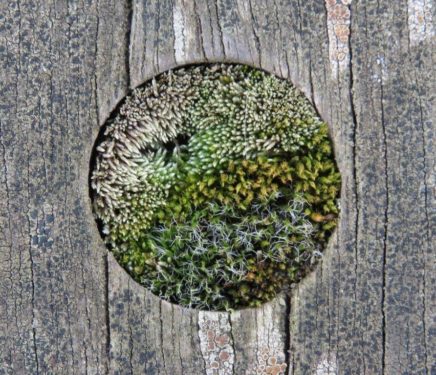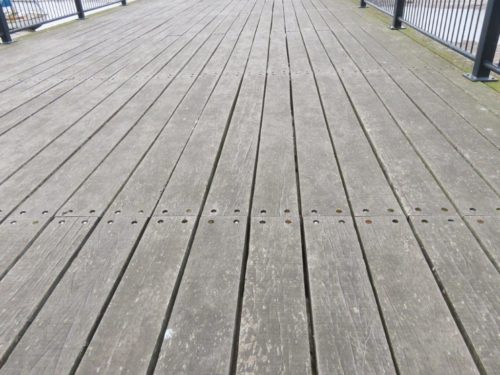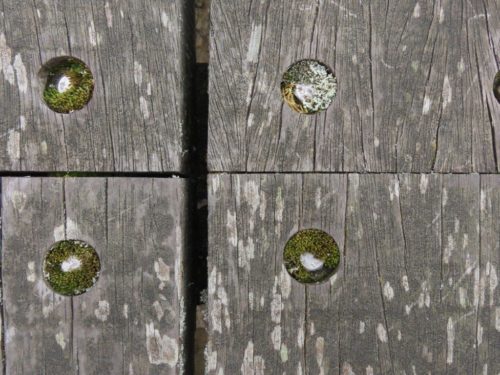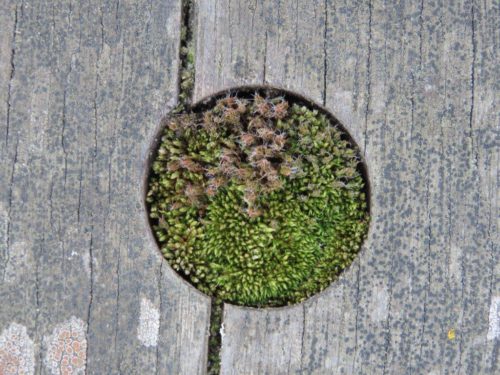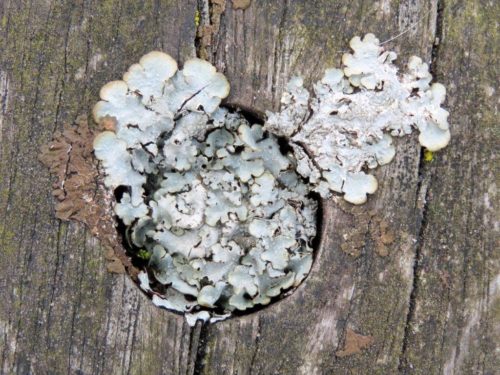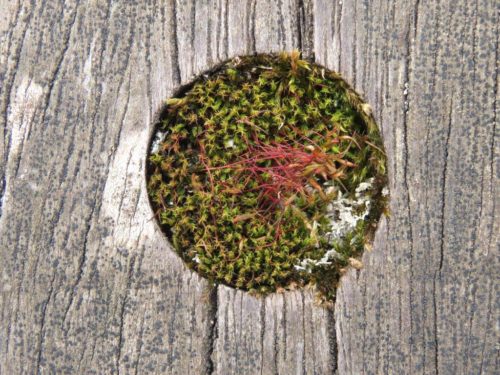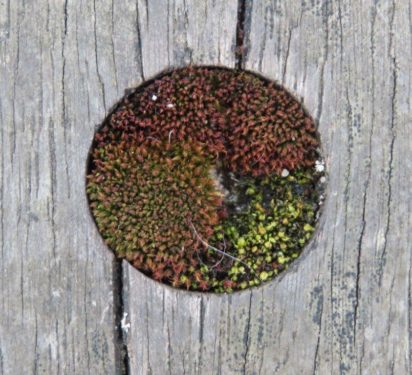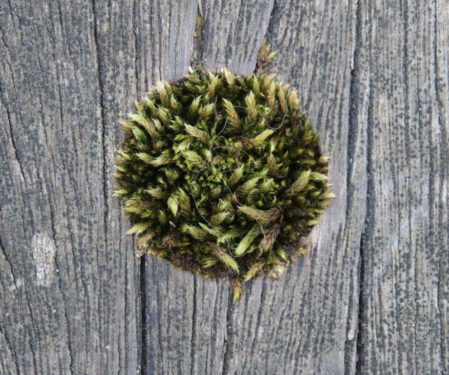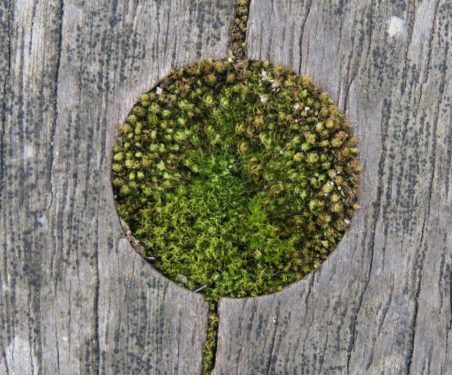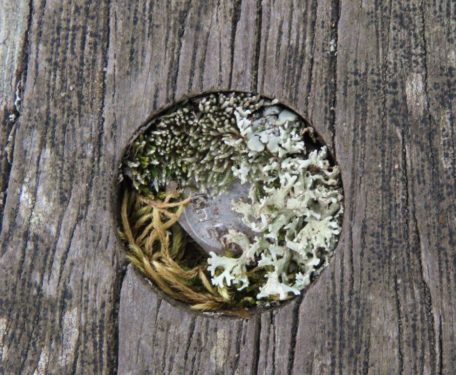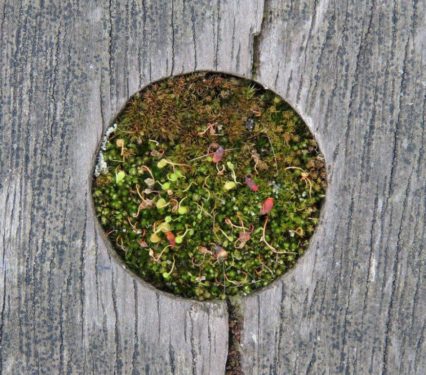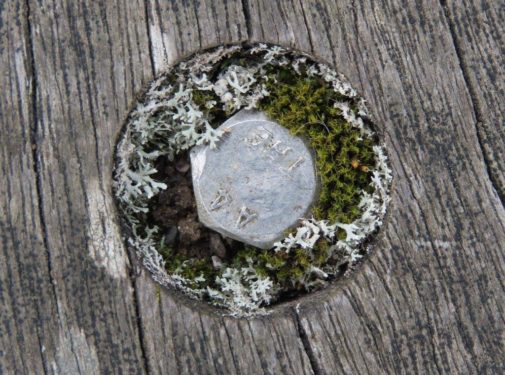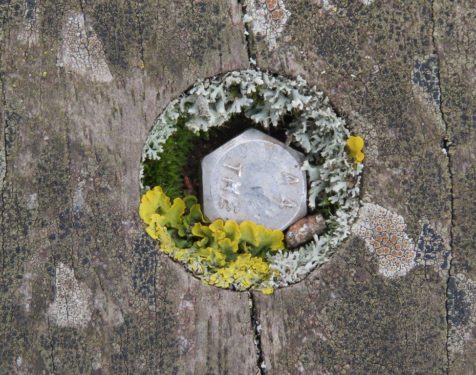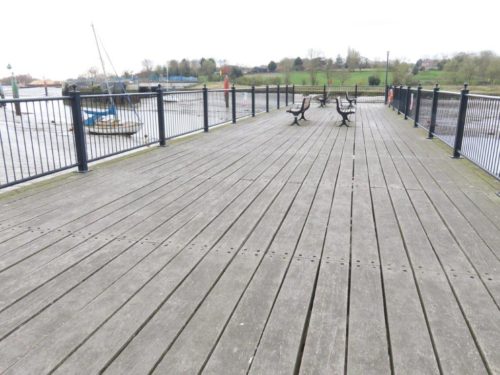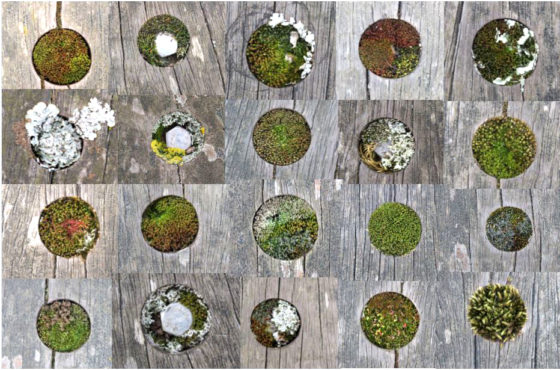One of our last blogs covered the plants of a microhabitat, dry grassland, found as discrete islands amid a sea of marshland on the top of ant-hills. Each one is unique, reflecting the uncertainties of colonisation of any of the species: chance plays a huge role in shaping the world around us.
Exactly the same, possibly even more so, can be said of today’s microhabitats, even closer to home for us, the array of 2cm-diameter bolt-holes on the timbers of the Shipyard jetty.
Lockdown changes perceptions, giving us the luxury of being able to look closely at that which we have walked over uncomprehendingly for years. Colonised by a range of different mosses and lichens, each and every faerie garden is absolutely unique, a miniature of natural art.
And moreover, a natural experiment, just waiting to be investigated. A whole series of transects, in two dimensions (distance from the shore, and running at a right angle, distance from the edge, the latter probably significant in terms of trampling, salinity and nutrient status given the propensity of Black-headed Gulls to sit on the rails)…
… and if the lockdown continues long into the summer, that might just be one of our sanity projects. Something which could produce valuable scientific evidence related to the the theories of island biogeography and colonisation, of such importance to understanding how we might encourage recolonisation of our nature-depleted landscape.
